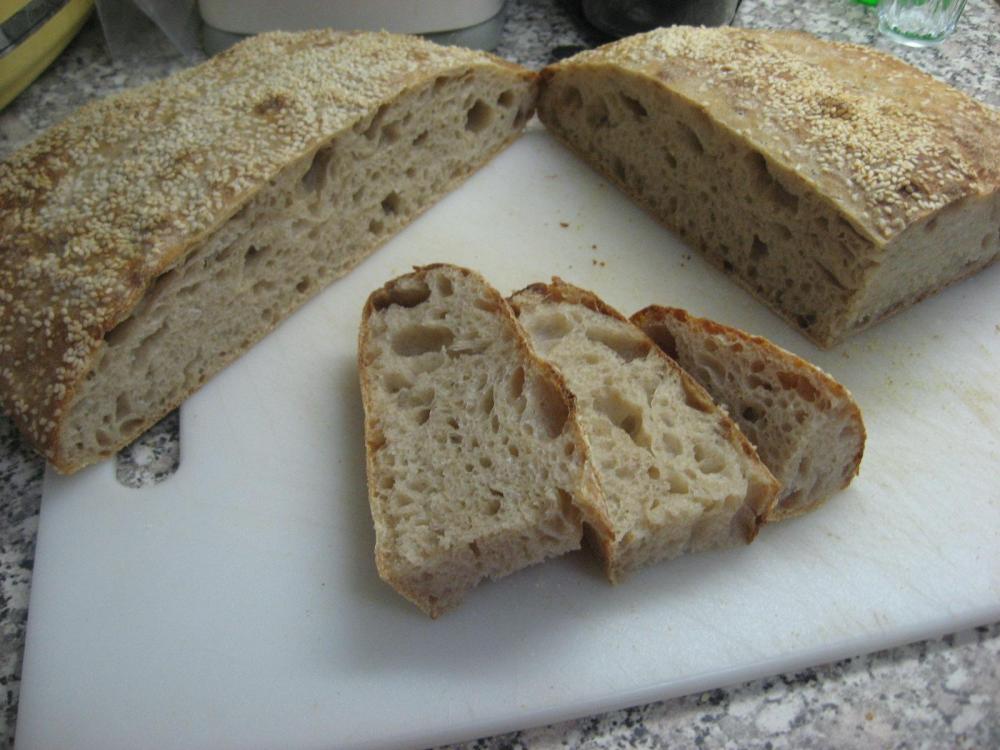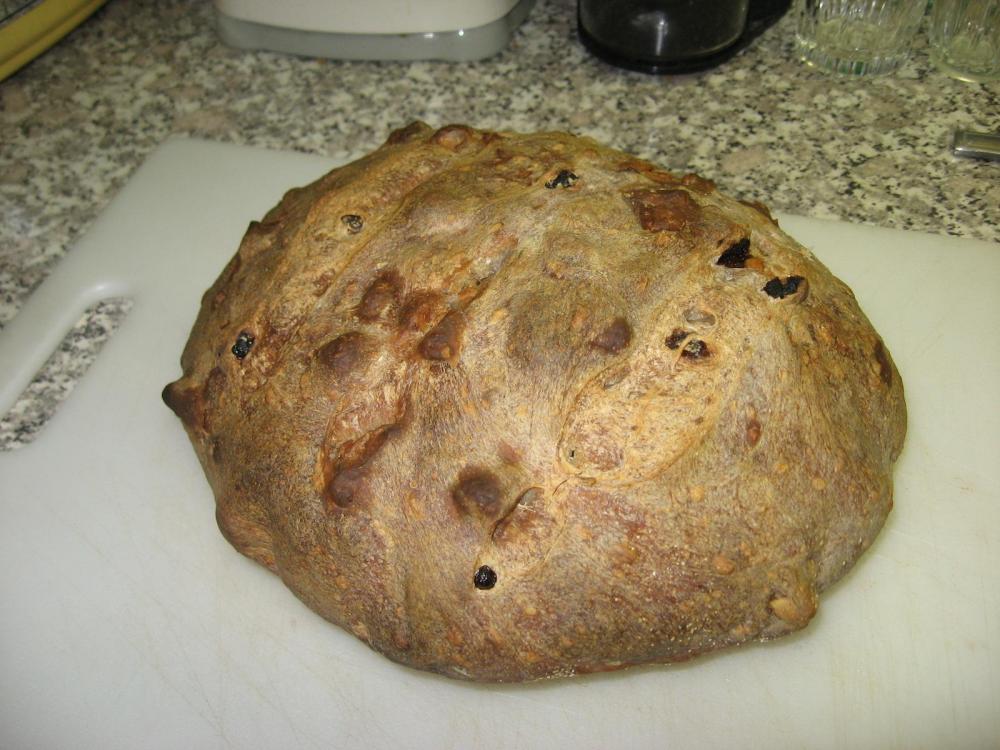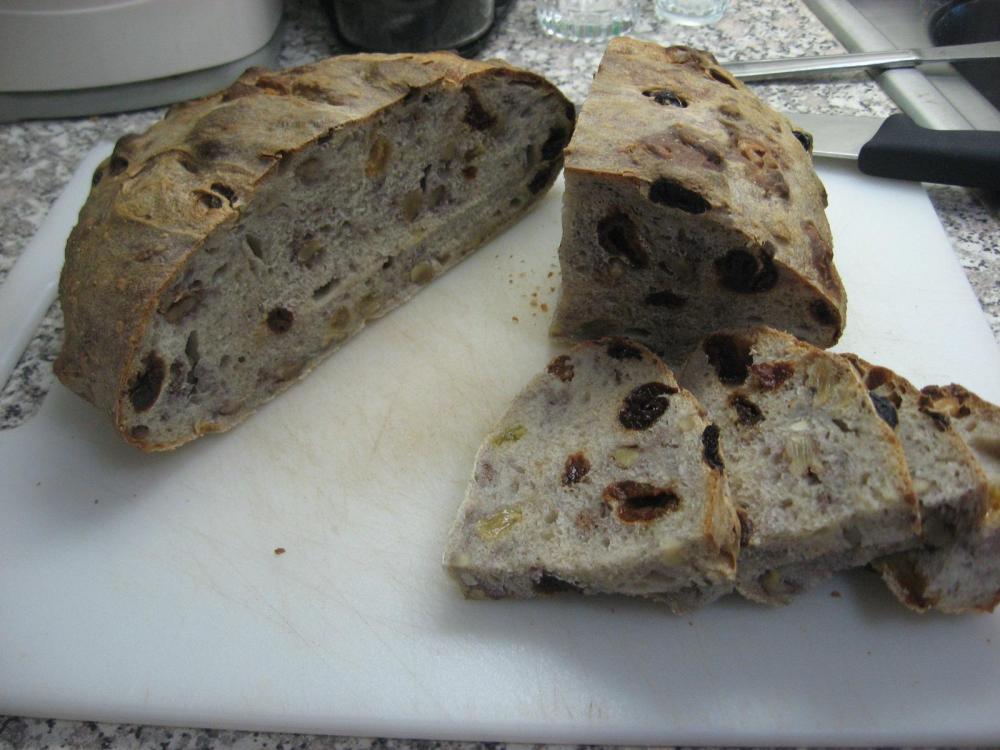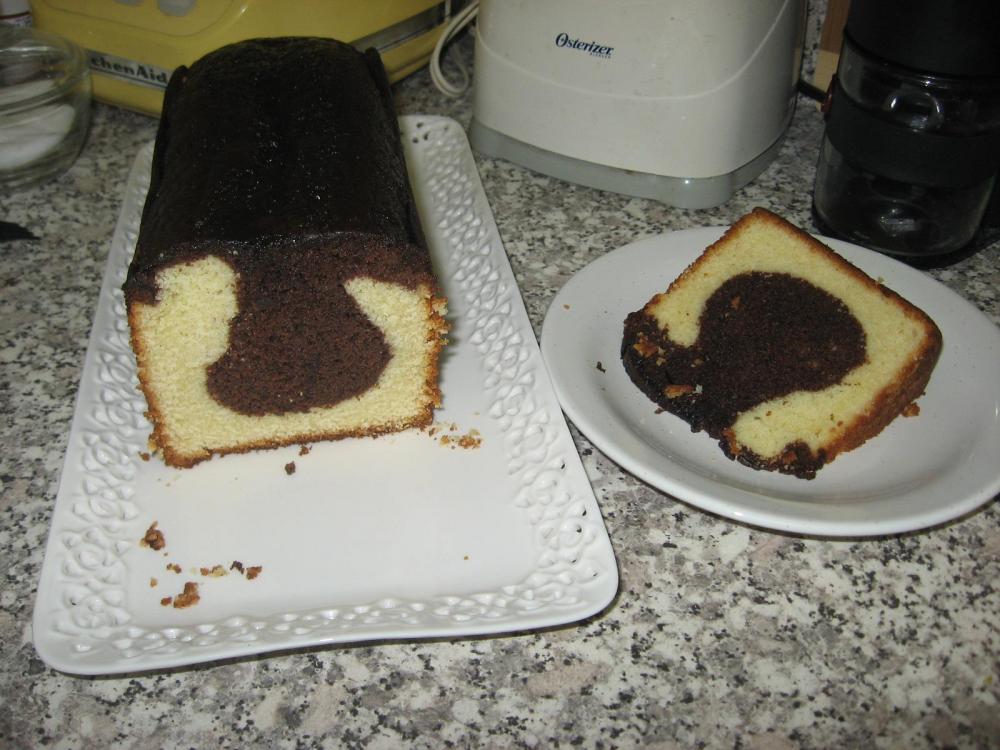
cakewalk
participating member-
Posts
2,525 -
Joined
-
Last visited
Content Type
Profiles
Forums
Store
Help Articles
Everything posted by cakewalk
-
Perfect khoubz (Pita bread) - getting a good puff
cakewalk replied to a topic in Middle East & Africa: Cooking & Baking
That is interesting shain, I've never seen that before. I used to use the wonder pot (sir peleh) all the time, they make very good cakes. But I always bought pitot. Can you make more than one pita at a time in that? They probably bake very quickly. I'm very interested in knowing how they turn out (if you find the pot, and I hope you do). -
The tahini will continue to absorb liquid. Just add a bit more water and stir.
-
I hear it's still 1950 in France.
-
That's how it would seem, but I'm not so sure. According to this (http://www.robbinsnest.com/china/edwin-knowles/history.html) they ceased operations in 1962, so I don't see how your dishes can be from 1966. I don't really know much about this, I Googled it because the pattern is so nice, I wanted to learn more about it as well. Also I was looking for some dishes a while ago to complete a set that I remember using when we were growing up, purely nostalgic, and I was reading a bit about old China. (Mine are glass, not China, of the variety that people got in the supermarkets in the 1940s and 50s. But they're really nice. Emerald green glass.) If I find more about your dishes, I'll post it.
-
Lovely pattern, enjoy using them. Have you seen this? http://www.mygrannysatticantiques.com/html/a_basic_guide_to_dating_edwin_.html
-
I'm really enjoying this 1-2-3 method for making a simple sourdough loaf. This loaf is 175 g starter (100% hydration), 350 g water, 525 g flour (which was 375 g bread flour and then 50 g each of semolina, rye, and whole wheat) and salt. Mix all together, let it hang out a few hours, stretch and fold, let sit overnight, shape the next morning. The dough is a bit slack and next time I will make it in a pan rather than free-form. It's very good, has quite a sour kick, nice texture. And it's so simple. (Just my speed.)
-
Just to complicate things further, there is a difference between bulgur and cracked wheat. Bulgur is partially cooked, as Shain mentioned; but cracked wheat is not, it is simply the cracked whole wheat berry. So bulgur (of any size, I think) is okay with just a soak since it is already partly cooked, but cracked wheat is a different story. I usually buy the very fine cracked wheat (or bulgur, depending on what is available), so I just soak in boiling water, I don't cook it. The fine cracked wheat is okay that way, but the more coarse cracked wheat is not. That needs to be cooked. But I'm surprised at the instructions to cook bulgur for 1 1/2 hours. That seems way too much, no matter what you're using. (Unless its the whole wheat berries. Uncracked.)
-
I once got into a sort of argument about this. I mentioned to someone that Israeli couscous was not really couscous, and they refused to believe it. Insisted that I didn't know what I was talking about. I've never mentioned it again. (But since you did ...)
-
This is a thrilling ride. Congratulations! And thank you.
-
I think it really does need the water. I add it to the tahini a little bit at a time, stirring after each addition. The tahini will seize, since it's mostly oil. Just keep adding a bit more water and stirring, until you reach a smooth consistency. Then start playing around with your flavorings. Tahini and honey is a wonderful combination. I've been known to mix a spoonful of tahini (unmixed, no water for this one) with a spoonful of honey and spread it on crackers. It's a great snack.
-
That's it in a nutshell.
-
Wow, nothing since 2009? I just came across Sesame Brittle ice cream. This is a winner. Toasted sesame ice cream with crunchy pieces of honeyed sesame brittle in it. I sometimes wonder why I go through the charade of scooping some ice cream into a dish. I always go back for the rest of it in short order. Well, at least it's not a full pint any more.
-
This is from the Bouchon cookbook, cranberry-currant and walnut bread. Keller suggests either/or, but I always combine them. Here I used a combination of dried cherries and raisins with the walnuts. Made as one large boule instead of two batards. (There was a bit more than one kilo of dough.) I've made this before, it always turns out nicely. (Although I increase the salt.) Very good with cream cheese, even better with brie.
- 492 replies
-
- 12
-

-
Caramel and chocolate and peanut butter, oh my. I don't remember where I found the recipe, but the two types of sugar were part of it. I don't always have confectioner's sugar, and I know I have made it using granulated sugar only and it's been fine. Confectioner's sugar incorporates more easily into the cookie dough, and I've noticed that many cookie recipes use it, presumably for that reason.
-
Might not be what you're looking for, but I have a recipe for Biscoff Shortbread Cookies that I used to make a lot, they're very good. I think peanut butter could probably be used in place of the Biscoff. But the recipe does also include butter, all the fat is not from the Biscoff alone. You can probably play around with the proportions of butter/Biscoff (or peanut butter), but I'm not sure you could do away with the butter altogether, although who knows? It might work. 2 sticks butter (8 oz) 1/2 cup granulated sugar 1/2 cup powdered sugar 170 gr Biscoff 1/2 tsp salt 1 tsp vanilla 2 cups all-purpose flour Beat butter & sugar until fluffy. Add Biscoff, salt, vanilla. Mix, scrape bowl as needed. Add flour, mix just to combine. Divide in half, form disks, wrap in plastic, refrigerate. Preheat to 350F, line sheets with parchment. Roll dough to 1/2-inch, cut 2-inch circles. Place on parchment-lined baking sheets 3/4" apart. Gather scraps, refrigerate 15-20 minutes, re-roll. Bake 24-28 minutes until just firm & lightly browned. Cool on sheets 10 minutes, then transfer to rack. My changes: I roll the dough to 1/4-inch because I prefer thinner cookies, and bake 12-14 minutes.
-
Your Daily Sweets: What Are You Making and Baking? (2015 – 2016)
cakewalk replied to a topic in Pastry & Baking
This is Flo Braker's version of the retro Tunnel Of Fudge cake. I've been dying to make it for ages, mostly because of Flo's idea to make it in a Pullman loaf pan, and I love the shape of it. (I make angel food cake in a Pullman pan as well, it comes out perfect.) The cake itself, well, I'm not crazy about the fudgy part, the baking time is too long (I took it out of the oven 10 minutes before her recommended time, and it's still a bit overdone) and I would flavor the vanilla part a bit more. But everyone else liked it. I'm just a kvetch. I just had to try it and get it out of my system.- 486 replies
-
- 12
-

-
Yes, dark rye flour is pumpernickel. (There is no pumpernickel plant!) A while ago I was reading about "real" pumpernickel bread, it is fascinating but I'm not ready to undertake it yet. It bakes for at least 12 hours in a slow oven, it's quite a production.This type of pumpernickel doesn't use anything to give it the dark color, it's from the flour and the long slow bake.
-
I read about this and meant to post a link, then forgot about it. I also can't wait to try this out. (And hope I don't let two years slip by before I do so!) A friend said it would probably be great in things like meringues (as she says in the article), but wasn't so sure how much the flavor would come through in sweets that are strongly flavored in their own right. (Like chocolate cake, for example.) Well, one way to find out.
-
I don't understand the differences between durum and semolina, but it seems that they're more than linguistic differences. I use semolina in bread (I've never made pasta) because I love the texture it adds, but I use just a small amount. (I like to add about 1/2 cup semolina and 1/2 cup rye flour to about 3 cups bread flour.) I usually use the coarser semolina because I like its texture better in the bread. But I did once mess up a Carole Field recipe because she specifically called for finely milled semolina (which I guess is the durum you are talking about) and I didn't have enough, so I added some coarse semolina to it. I buy it at a shop in the neighborhood that sells it by the pound, not in packages, and they carry "semolina" and "fine semolina." Next time I go I will ask for durum flour, without mentioning the word semolina, and see what they tell me. The flour linked to on Amazon is very expensive, but it looks like I will have to give it a try, I'm very curious now.
-
I stumbled across this post the other day: http://www.thefreshloaf.com/node/9346/123-easy-formula-sourdough-bread It's a bit old, but I had never seen it before. I liked her method - no fuss, just do it. I tried it the other day, and it really made a nice loaf of bread, quite sour (which I like) and good texture. I used bread flour with some rye and semolina, because it's a combination I like. I baked it in a loaf tin, I used a 9x5" although an 8 1/2x4 1/2 would have been better. The crumb was a bit open, but it was good for sandwiches. I know I will use this method again trying out different flour combinations. Has anyone ever used this method?
-
That pizza crust looks interesting. What's the texture like? Is it just the cauliflower and cheese, or is there something else? I'm having non-gluten eaters (kids) over for lunch in a couple of weeks, that looks like a nice side dish. I made the kugel over Passover (I microwaved the cauliflower and processed it lightly with the mushrooms and onions), it went over very well.
-
I don't understand this. If they're adults and they don't want to eat fruits and vegetables, well, that's their choice, no? I think most of the "disguised" stuff for children is heavily doctored with sugar. There are things like brownies made with beans or beets. I'm not a big fan, but many people seem to like it, and the whole point is that you'd never guess the secret ingredient that makes it "healthy."
-
That really is a beautiful crust. I've had similar surprises upon slicing into loaves that I thought looked great when I took them out of the oven. Often I never figure out where I went wrong, because I think I've done the same thing I've always done. I'm not familiar with the Forkish book, but my first thought was: too much liquid, and not thoroughly incorporated into the dough. Was it a no-knead bread?
-
Great topic. I don't have any answers for you, but I just finished my own "fashleh" (mess-up), although in my case I know what went wrong. I always make Carole Walter's Passover Lemon Chiffon Cake. It's a great cake. Anyway, this year it seems that I bought potato flour instead of potato starch. Who woulda thunk these two things are so different??! The batter was so thick! Potato flour absorbs liquid like a sponge, who knew? I added water and a bit more oil, trying to salvage it. And of course I baked it anyway. It's unlikely that I'll serve it. But at least now I own a piece of the rock! You can tell people it's chocolate brittle. If it tastes good, that's the main thing. What was the consistency of the batter before you baked? Were you able to scoop batter onto the baking sheet? Were all the ingredients mixed together in the FP after the nuts were chopped? Do you think it might turn out more cookie-like if you did whip the egg whites (or maybe two of them) with some of the sugar and then incorporate it into the rest of the batter? I'm just trying to trouble shoot. It sounds familiar, I seem to remember making something (not for Passover) with egg whites that were not whipped, and I was suspicious of the recipe but I made it anyway, and I remember having to throw it out. But I can't remember what it was.




